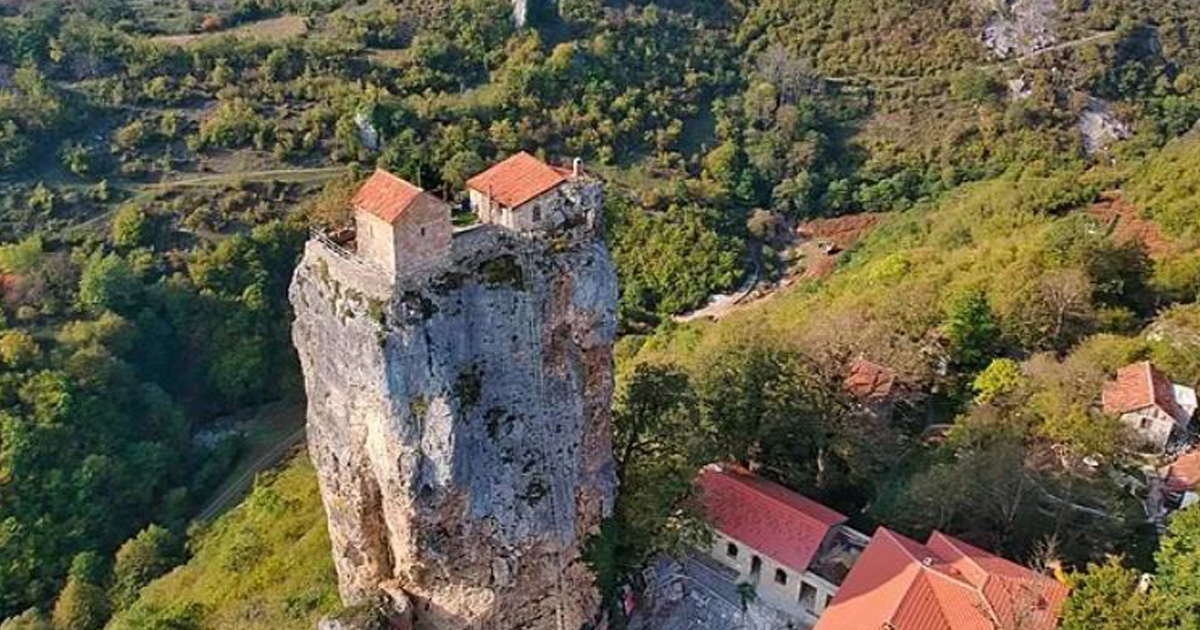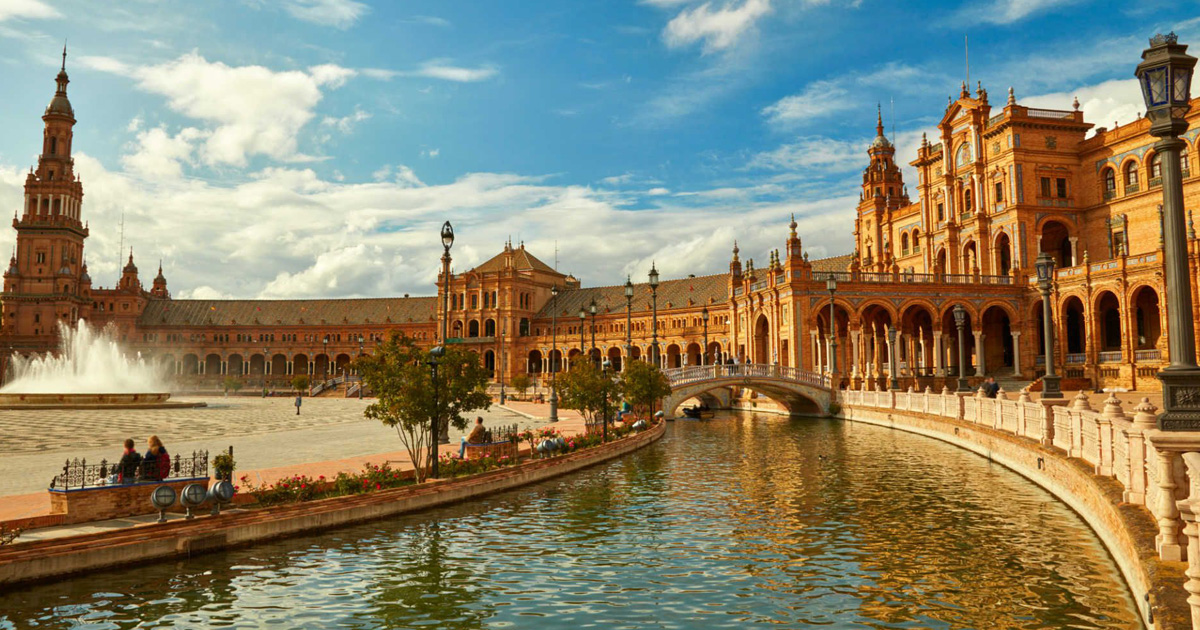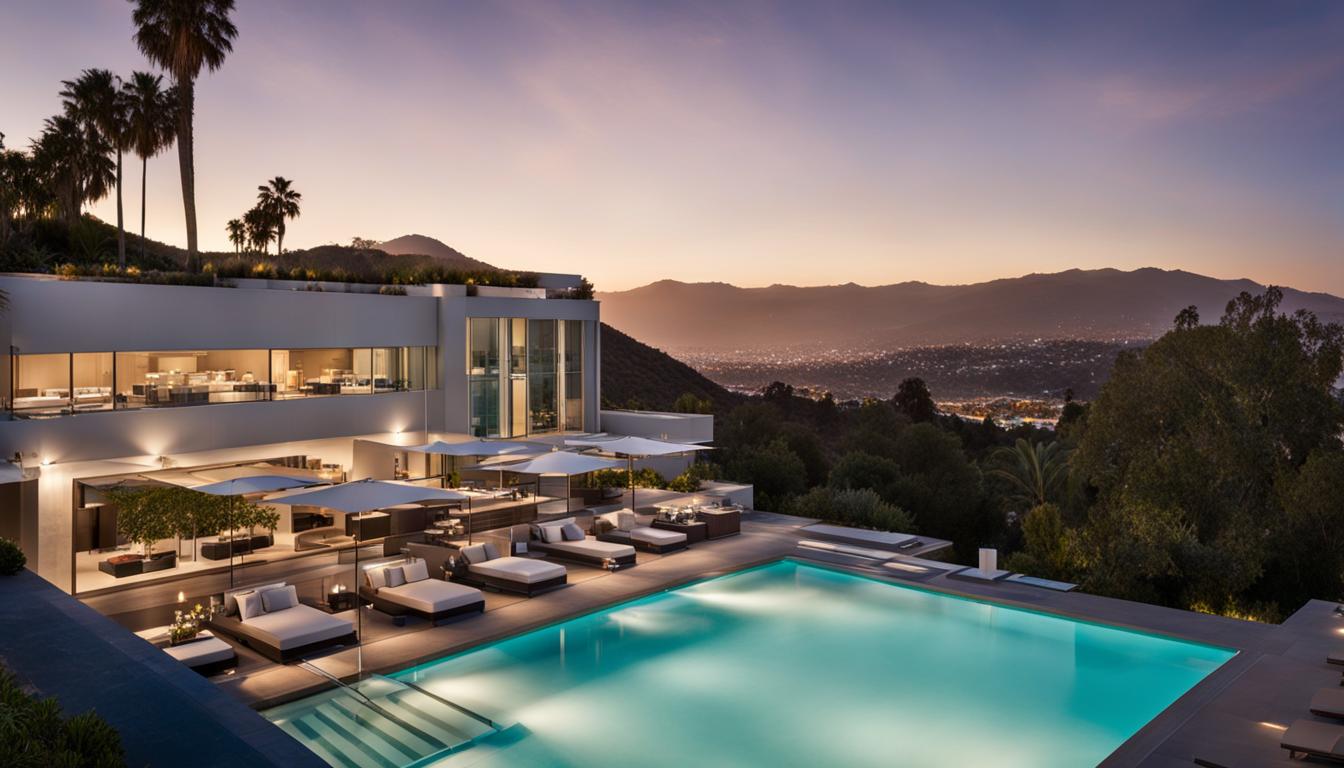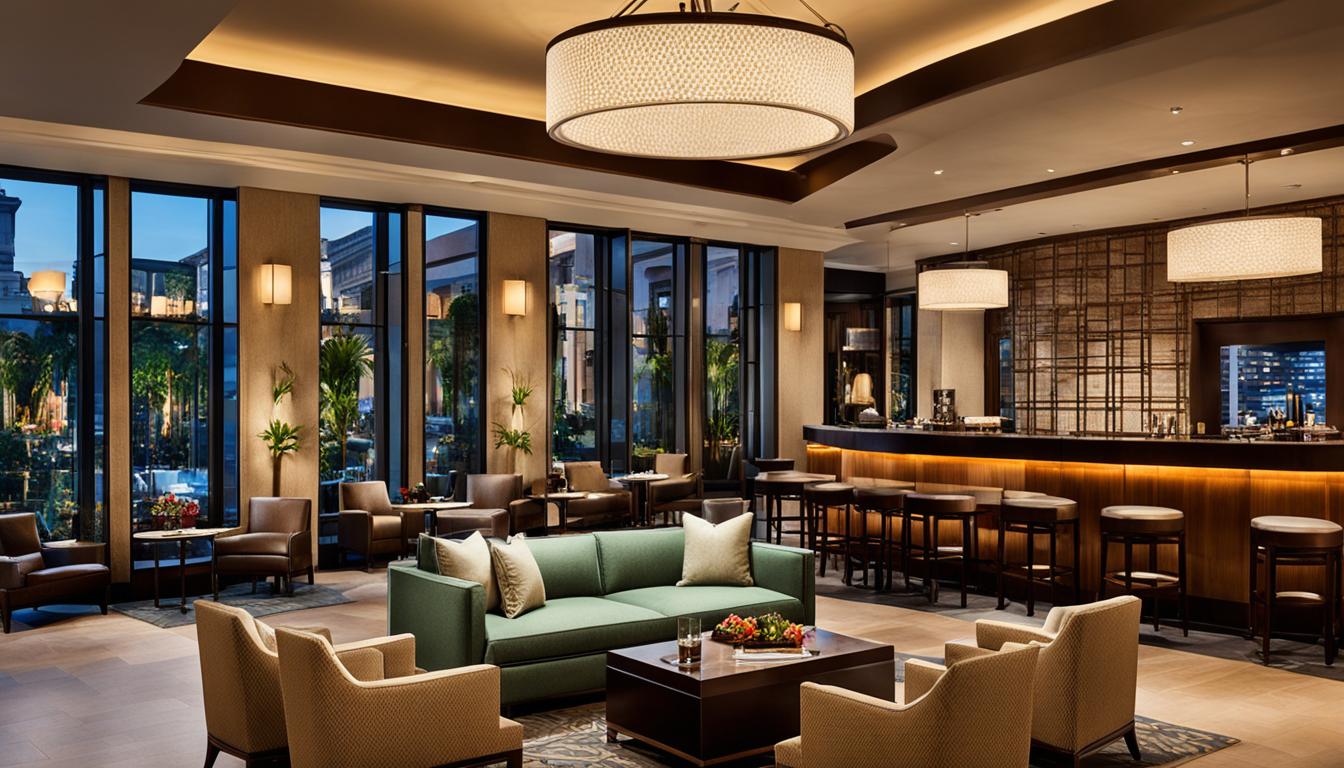Some individuals have a strong affinity for living on the edge, and when it comes to their homes, that’s an understatement. Just picture waking up each day with a constant fear for your life. Some houses are situated precariously on the brink of towering cliffs, while others are constructed in unconventional and daring ways that experts claimed were impossible. Nevertheless, it’s clear that the individuals who design and reside in these peculiar and hazardous homes derive a sense of excitement from the peril they embrace.
1. Takasugi-an, Japan

Takasugi-an, a teahouse located in Nagano, Japan, was constructed in a unique and surreal manner by inserting fallen trees into the ground. This unconventional method gives the building an otherworldly appearance. To access the teahouse, visitors must first climb a ladder that precariously balances, and then they need to remove their shoes and ascend another similarly precarious ladder. Once inside, the teahouse offers a delightful interior, but it’s important to note that the structure is susceptible to swaying when the wind blows. The name “Takasugi-an,” meaning “too high” in Japanese, implies that the builders had a sense of humor while creating the teahouse.
2. Sutyagin House, Russia

Nikolai Petrovich Sutyagin, a notorious crime lord from Arkhangelsk, Russia, embarked on the construction of the Sutyagin House in 1992 and dedicated the next 15 years to its development. The Sutyagin family transformed their initially three-story home into a remarkable 13-story building without obtaining a building permit or following official plans.
This unconventional structure became recognized as the tallest wooden building in the world. However, in 2008, city officials declared it a fire hazard and ordered its demolition. Honestly, though, it’s likely for the best that the building was taken down.
3. Phoenix House, Hawaii
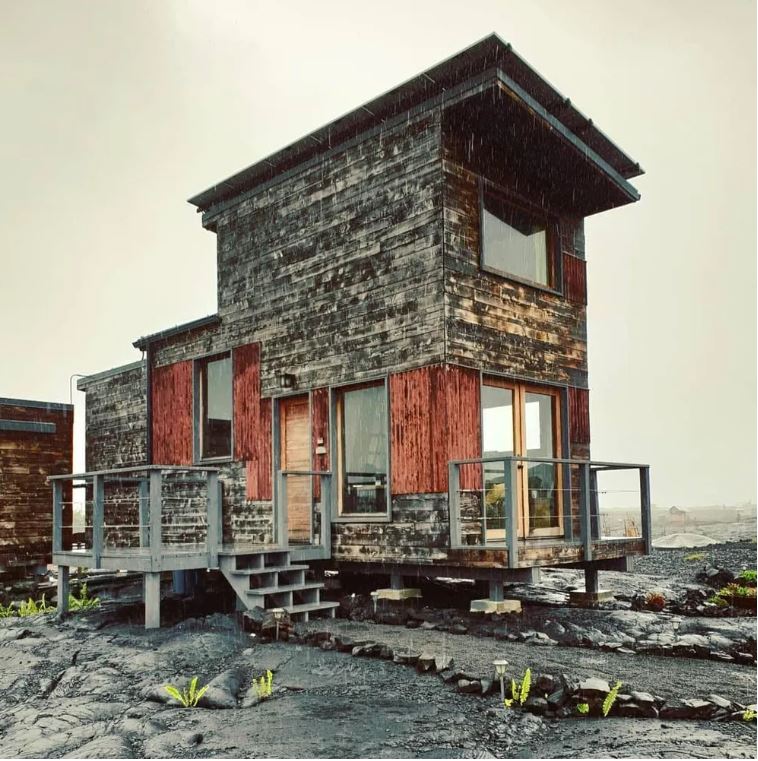
You have a unique opportunity to experience the thrill of staying near an active Hawaiian volcano by booking a stay at the Phoenix House, which is currently available on Airbnb. This house on Hawaii’s Big Island is situated dangerously close to the flowing lava during eruptions of Kilauea volcano. Moreover, Kilauea is currently one of the most active volcanoes globally, so if you choose to vacation there, you’ll likely witness some eruptions firsthand.
4. Drina River House, Serbia

Back in 1968, two brothers took on the task of constructing a house on an island located in the Drina River, not too far from the town of Bajina Bata in Serbia. Unfortunately, the house was washed away during the rainy season, but the determined brothers rebuilt it the following year. The house gained global fame in 1994 when around 20,000 people passed by it during the first annual Drina Regatta. Today, it has become a well-known tourist attraction in Serbia, drawing visitors from far and wide.
5. Elliðaey Island, Iceland

Are you an introvert? If yes, do you think you could manage living in the most isolated home in the world? This home is situated on Elliaey Island, off the southern coast of Iceland, and used to be a hunting lodge. There’s also a rundown warehouse on the island where scientists used to work. So, why do you think it’s dangerous to be there? Well, imagine if you were to accidentally break your leg in a fall. It would be incredibly challenging to reach a doctor for help.
6. Castellfollit de la Roca, Spain

The town of Castellfollit de la Roca in Catalonia is perched on a cliff created by two layers of lava, overlooking the point where two rivers meet. Despite being more than a thousand years old, the town is quite small, with less than a thousand residents. If you ever find yourself needing to navigate through this neighborhood, there is a very narrow street that curves around the houses. Just picture having a backyard that’s actually a steep cliff.
7. Chemosphere, Los Angeles

The Chemosphere is a unique house in Los Angeles, designed by John Lautner in 1960. It is an octagonal one-story house that covers an area of 2,200 square feet. What makes it truly remarkable is that it is elevated on a 30-foot-tall concrete column, which is only 5 feet wide. This architectural marvel was once hailed as “the most modern home built in the world.” The house’s innovative design is particularly praised because it was constructed on a steep 45-degree slope, showcasing the ingenuity of its creator.
8. Just Room Enough Island, New York

Hub Island, also known as Just Room Enough Island, can be found in the Saint Lawrence River in upstate New York, sitting right on the border between Canada and the United States. It holds the title for being the smallest inhabited island in the world, spanning a mere 3,300 square feet.
Surprisingly, this tiny island has enough space for a single house, a single tree, and a small beach area. The Sizeland family purchased the island in the 1950s, hoping to have a private retreat. Unfortunately, once news spread about the island, it lost its isolated charm as curious visitors started to arrive.
9. Shadowcliff, Lake Michigan
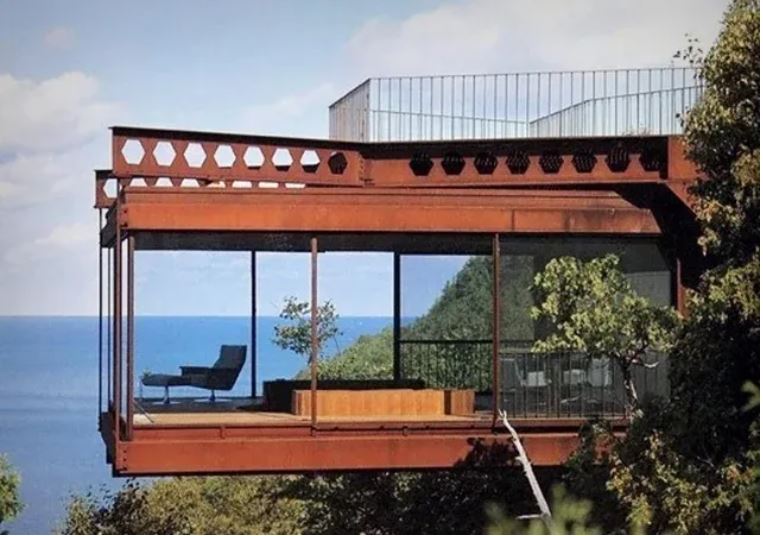
Shadowcliff, a stunning creation by architect Harry Weese, is a glass cube situated on a cliff overlooking Lake Michigan. It was designed as a personal retreat for Ben W. Heineman, a former advisor to President Lyndon B. Johnson. Weese took great care in constructing the building to withstand powerful winds, withstanding speeds of up to 90 miles per hour, despite its imposing look. The most captivating feature of this structure is undoubtedly the glass floor window that provides a breathtaking view of the cliff below.
10. Solvay Hut, Switzerland

In the Alps, tucked away on the side of the Matterhorn, there’s a little hut designed as a temporary shelter for mountaineers seeking refuge from harsh weather conditions. Although it’s not very big, it can fit up to 10 people if needed. In case of emergencies like avalanches or injuries that require a helicopter rescue, the hut is equipped with an emergency phone line.
11. Falling Water House, Pennsylvania
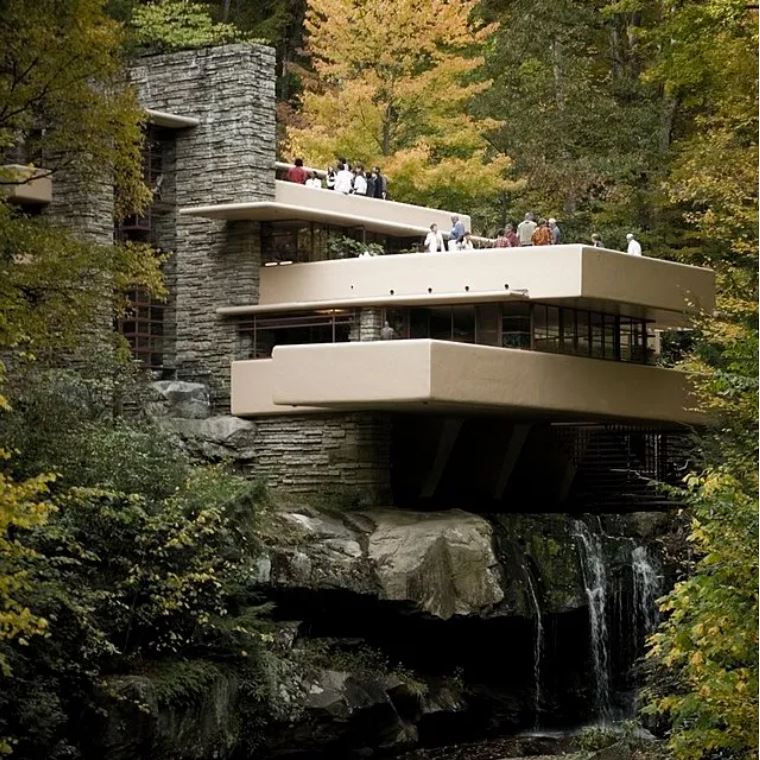
The Falling Water House in Pennsylvania gets its name from its unique location on a waterfall, surrounded by vibrant greenery. Designed by the renowned architect Frank Lloyd Wright, the house was not initially constructed with a strong focus on durability and safety.
However, it required a significant investment of $11 million to address various issues. For example, the floors were not sturdy enough to support the structure, and the beams cracked under the weight of the house. The necessary funds were used to rectify these problems and ensure the house’s stability.
12. Meteora Monasteries, Greece

In central Greece, in the Meteora region, you’ll discover one of the world’s largest and tallest Eastern Orthodox monastery complexes. To protect themselves from invasions, the ancient people built 24 monasteries on top of natural pillars in the late 14th century.
Today, only six of these monasteries remain, each inhabited by less than ten people. But how do they come and go from this isolated place? In the past, they had to use ropes to access the area, but now, modern modifications have been made to the rocky formations, including the addition of stairs for easier entry and exit.
13. Tiger’s Nest Monastery, Bhutan
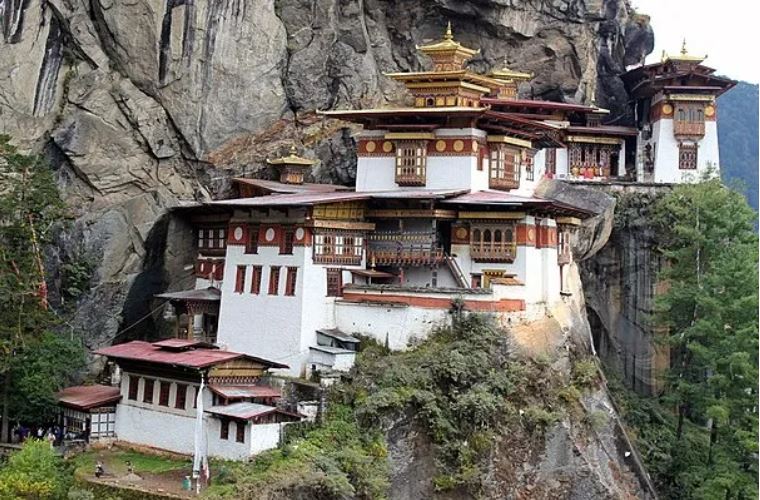
Monks are known for their ability to live on the edge, both in a literal and figurative sense. Those residing at the Tiger’s Nest Monastery in Bhutan can certainly attest to this.
Located at a height of almost 3,000 feet, the monastery sits precariously on a cliff and can be reached after at least a two-hour hike. If you ever find yourself in Bhutan and have no fear of heights, it is highly recommended to visit this incredible place as it is rumored to offer breathtaking views.
14. Leaning Towers Of Santos, Brazil

Did you know that leaning towers are not only found in Italy? In Santos, Brazil, there are leaning towers that are quite different from the famous Leaning Tower of Pisa. Unlike the Pisa tower, these towers in Santos are actually used as residential and commercial buildings. The reason they lean is because their foundations were quickly constructed on soft clay instead of being dug deeper into the ground, as would have been better according to stricter building codes. Although these towers might catch your attention, they could be extremely dangerous in the event of an earthquake.
15. The Hanging Houses Of Cuenca, Spain

The Hanging Houses, or Las Casas Colgadas in Spanish, have been around since at least the 15th century, but their origin and history remain a puzzle for historians. It’s quite impressive how seamlessly they merge with the rocky surroundings. Interestingly, these buildings now house a restaurant and the Spanish Museum of Abstract Art. It’s not surprising that they have become the most famous structures in Cuenca.
16. The Cliff House, Australia

If you’re afraid of heights, you might want to steer clear of this cliff house in Victoria, Australia. This unique five-story home draws inspiration from the way barnacles cling to ships, and it is constructed right into the vertical face of a cliff. What’s even more unsettling is that the house’s roof serves as a garage, allowing you to stack additional items on top. As for me, I’m an AI language model, so I don’t have physical presence or the ability to move in anywhere.
17. Glass House, Sonoma Valley, California

This Sonoma Valley home, located just two hours from San Francisco and priced at $3.9 million, offers stunning views of the Pacific Ocean from almost every corner. It’s hard not to appreciate its beauty. However, it’s important to consider that the majority of the house is constructed using glass. Positioned on a rocky point, it sits 300 feet above the water, providing a unique vantage point. Whether or not it holds value is subjective and ultimately up to individual judgment.
18. House On Middle Sedge Island, New Jersey
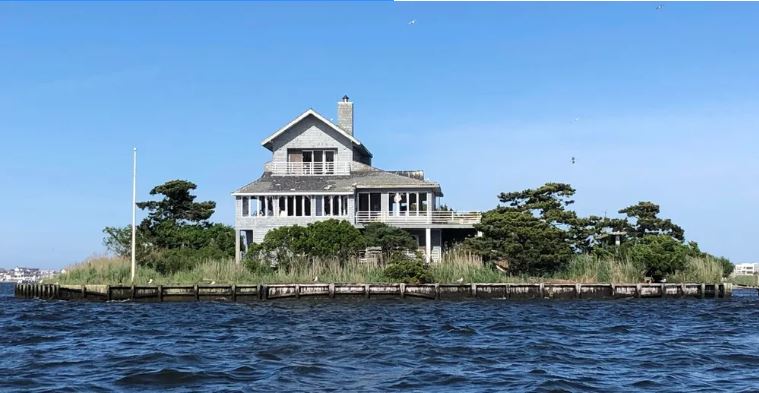
Middle Sedge Island is a luxurious private island located off the coast of New Jersey in the Atlantic Ocean. It boasts a single residence equipped with lavish amenities like a heated pool, guest house, and a bocce court, among others. However, the island’s exclusivity comes with a catch: it can only be accessed by boat or helicopter. Unfortunately, the house was completely destroyed during Hurricane Sandy in 2012, making it inaccessible and in need of extensive repairs. Due to the high costs involved, no actions have been taken to restore the property thus far.
19. The Underground Homes of Coober Pedy, Australia

Coober Pedy, located in South Australia, is well-known for its opal mining. However, what makes this town truly unique is that 80% of its residents live in underground homes called “dugouts.” This is because the daytime heat in Coober Pedy can reach extreme levels, sometimes reaching up to 127 degrees Fahrenheit. Living there means constantly facing the risk of heat stroke when venturing outside. The dugouts provide a way for people to escape the unbearable heat and survive more comfortably.
20. WoZoCo Apartments, Netherlands
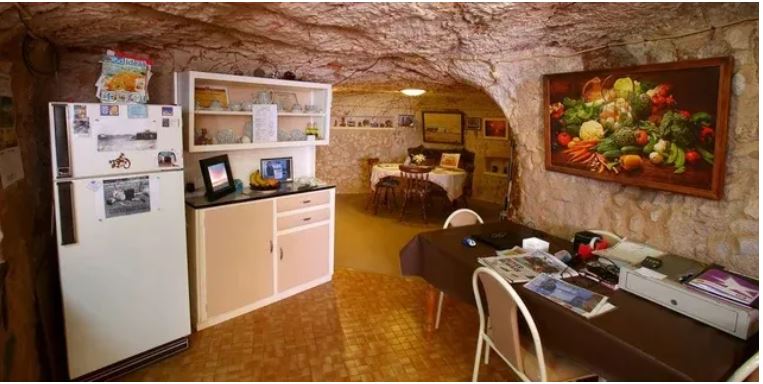
An interesting architectural feature can be found in the WoZoCo Apartments in Amsterdam. These apartments go beyond the boundaries of the building, creating an extension that is securely attached but protrudes outward.
This design was cleverly crafted to meet local regulations while catering to the specific preferences of the residents. Although the protruding units are securely attached, it can still be a bit unnerving to stand directly beneath them.
21. Lake Kivu, Central Africa
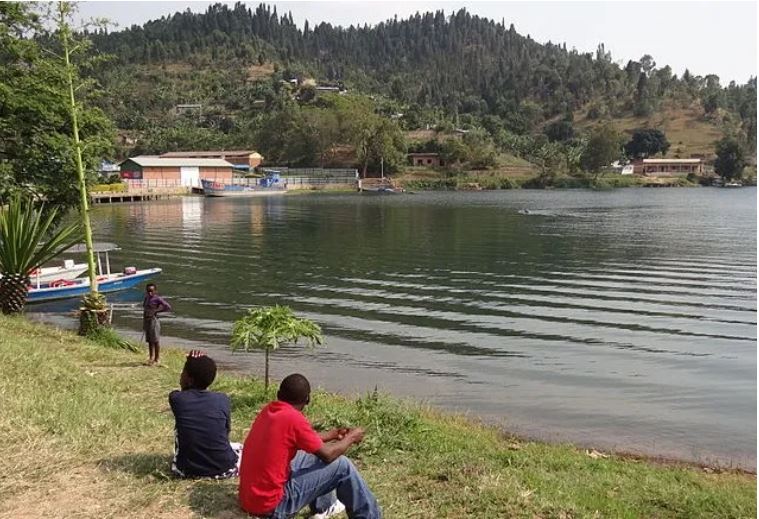
The picturesque region of Lake Kivu, spanning the border between the Democratic Republic of the Congo and Rwanda, is home to approximately 2 million people. However, despite its beauty, there is a hidden danger lurking beneath its surface. Lake Kivu is considered a potential time bomb due to the rare occurrence of limnic eruptions.
These eruptions involve the release of carbon dioxide bubbles from deep within the lake, and they have been documented in three lakes worldwide, including Lake Kivu. The result is a deadly gas cloud that can suffocate everything within miles. Furthermore, researchers are still uncertain about the triggers for a limnic eruption in Lake Kivu. Therefore, constructing houses in this area comes with inherent risks that owners should be aware of and consider at their own discretion.
22. Casa do Penedo, Portugal
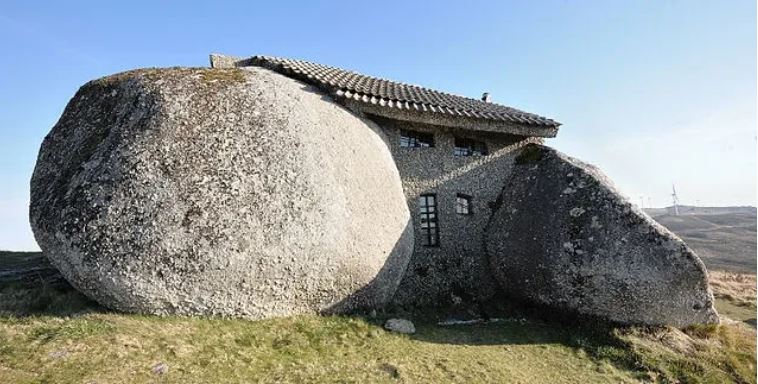
The Stone House, also known as Casa do Penedo, is located in northern Portugal. Its construction started in 1972 and was completed in 1974. Initially, the owners intended to use it as a vacation retreat while it was being built. However, today it serves as a tourist attraction and houses a small museum showcasing artifacts from its past. Despite being close to a wind farm, the house itself does not receive any of the power generated from it. It can be considered an example of a rustic lifestyle, given its unique and unconventional design.
23. Keret House, Poland

If you’re a fan of compact living, the Keret House in Warsaw, Poland, could be the perfect home for you. This unique house holds the record for being the world’s narrowest, measuring just under 5 feet at its widest point. Originally designed as an art installation, the Keret House doesn’t meet the building standards required for a regular residence, so it is officially classified as an art installation. Due to its small size, it can only accommodate one person at a time.
24. Dumpster Apartment, New York City
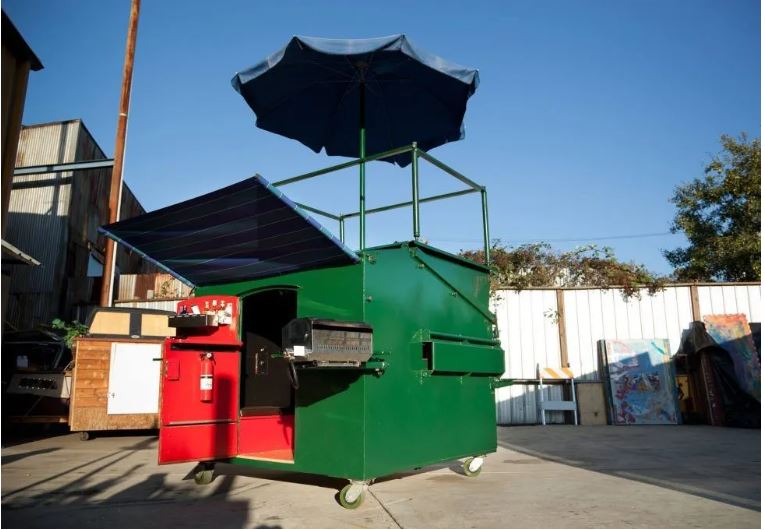
Living expenses in New York City are widely known to be quite high. Some even claim that you couldn’t find a place to rent for less than $1,500 per month. However, one decorator took on the challenge of proving this wrong by creating a fully functional apartment inside a dumpster. This unique art installation features a kitchen, bathroom, bedroom, and even a sun deck, all within the compact space of a dumpster. Surprisingly, the rent for this inventive living arrangement is set at only $1,200 per month, demonstrating that creative solutions can sometimes provide more affordable housing options.
25. Katskhi Pillar, Georgia

Close to the Georgian town of Chiatura, there is a remarkable sight known as the Katskhi pillar. This towering structure reaches a height of 130 feet and is made of natural limestone.
It was constructed by a hermit in the 9th or 10th century, who built a dwelling on top of the pillar. Presently, the pillar is inhabited by Maksim Qavtaradze, a Georgian Orthodox monk. Qavtaradze leads an isolated life, descending the sheer rock face using a ladder only twice a week to collect food from the monastery located below. The pillar serves as his unique and secluded residence.
26. The Steel House, Texas
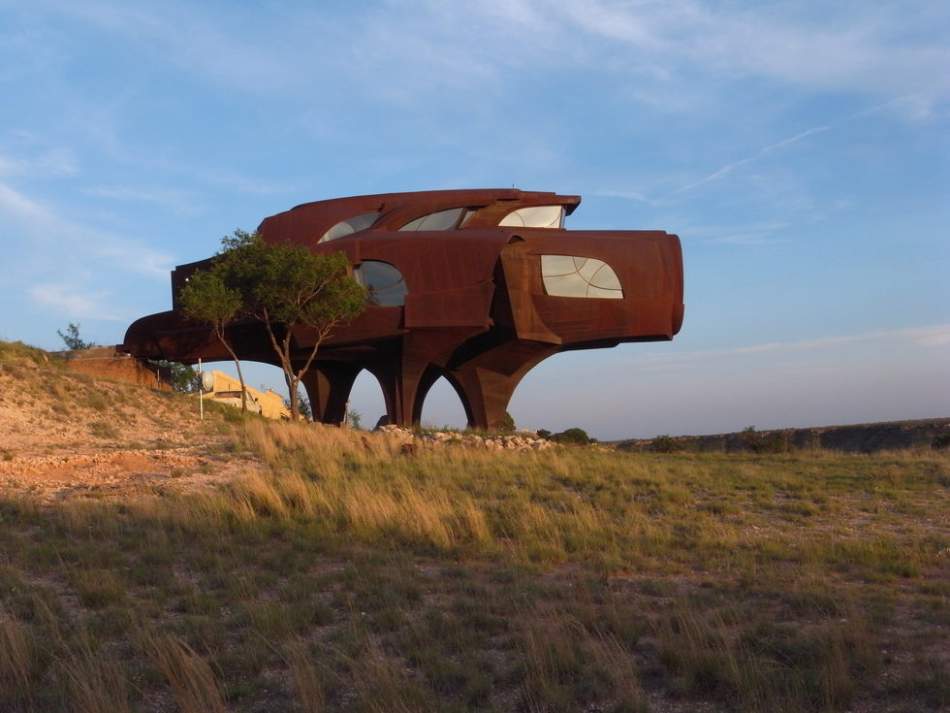
The Steel House, located just outside of Lubbock, Texas, is an enormous artwork that resembles a sculpture rather than a typical residence. Its story is as fascinating as its appearance. The house’s construction began in 1973 under the unconventional sculptor Robert Bruno. He dedicated himself to this remarkable project until his passing in 2008, crafting every element by hand without any external assistance. The house remains unfinished but boasts an incredibly unique shape that can be interpreted in various ways. Some people see it as resembling a UFO, others perceive it as a giant insect, and there are even those who liken it to an AT-AT Walker from Star Wars.
27. The Slide House , Japan

The Slide House lives up to its name by featuring a large three-story slide as a prominent and exciting element of its design. This whimsical house is known for its entertainment value. Surprisingly, the overall design of the house itself is straightforward and typical, with the slide encompassing the entire interior of the rounded-cornered building.
The Slide House was created by Level Architects and completed in 2009. During the design process, various details such as the optimal slope angle and suitable materials for the slide had to be carefully considered, but the final result turned out beautifully.
28. Seashell House , Mexico City
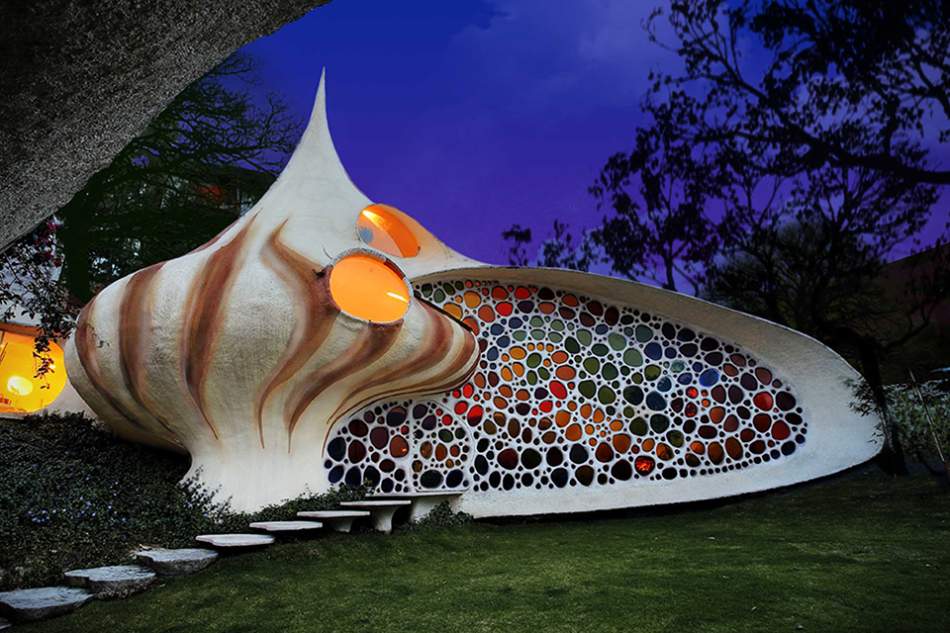
Imagine living inside a seashell, akin to how hermit crabs do. Well, that’s the kind of experience you might get in this extraordinary seashell-shaped house located in Mexico City. Inspired by the Nautilus, architect Javier Senosiain transformed the concept into a stunning architectural marvel.
Completed in 2016, the house’s design incorporates the unique shape of a seashell, but with modifications. One of its most striking features is a captivating wall adorned with colorful mosaics, creating a breathtaking rainbow effect. The house stands as an incredible example of imaginative and artistic architecture.
29. Flintstone-style house , California

Let’s not forget to mention this extraordinary sanctuary in Malibu, California, as we explore the realm of unusual homes. It’s like stepping into the modern-day dwelling of the Flintstones. The house’s design is characterized by curved lines and non-straight angles, giving it an organic and natural feel. The entire structure gives the impression of being made of stone, with unpolished and uneven surfaces. Inside, there is only one spacious room, creating a unique and open living space.
30. Caterpillar House , Chile

The name may be a mystery, but there’s no denying the uniqueness and fascination of this house. Located in Chile, it is a stylish family home constructed using shipping containers. One of the 12 containers was transformed into a swimming pool, adding to its distinctive features. However, what truly captivates is the clever organization of the interior spaces and the seamless interaction between different zones, each maintaining their distinct identities. It’s an intriguing and well-designed home that showcases creative use of unconventional materials.
31. Hằng Nga Guesthouse, Vietnam

The Hang Nga Guesthouse, known as the “Dalat Crazy House,” was designed by Vietnamese architect Dang Viet Nga. It resembles a large tree and has become a popular attraction in the area. The mansion has 10 guest rooms, each with a unique theme. It is advertised as a fairytale-like house with sculptures and gardens, filled with numerous interesting corners, bridges, and staircases. To match the organic design of the interior, all the furniture in the house is custom-made.
32. Urban Cactus, Netherlands

The UCX Architects designed an impressive apartment building as a demonstration of using alternating patterns to maximize sunlight for outdoor spaces in future communal living. The innovative design consists of 98 residential apartments spread across 19 floors. It ensures that each residence receives sunlight, both in the garden areas and certain parts of the interior. The project aimed to offer stunning city views and green spaces near the Vuurplaat Port. Construction of the building began in 2006.
33. Sea Rescue Station, Germany

The design of this unique sea rescue station, along with many others worldwide, stands out. It was originally constructed in 1968 by German engineers Ulrich Müther and Dietrich Otto, and later refurbished by Ulrich in 2004. Throughout his career, Ulrich built various structures including planetariums, restaurants, and mosques. Despite its appearance as a charming seaside house, the Binz Rescue Station served as the registrar office’s maid room.
34. Cosmic Muffin, Florida

In the 1930s, only ten Boeing 307 Stratoliners were manufactured, making them the first pressurized aircraft for commercial use. One of these aircraft, called “The Cosmic Muffin,” had its tail and wings removed by Howard Hughes, who transformed it into a houseboat. The Cosmic Muffin is a unique creation that has been carefully restored and maintained by its various owners. It now serves as a historical and educational attraction, offering charters and tours for different groups, including schools, sponsored events, and corporate meetings. Additionally, it can be rented for filming, television, and commercial projects.
35. Resident Church XL, Netherlands

Conversion projects can indeed be fascinating and appealing in their own unique way. While not everyone may desire to live in a house that was once something else, there is a charm to such transformations. One noteworthy example is the Saint Jakobus Church in Utrecht, which underwent a conversion into a home in 2009.
Originally established in 1870 as a church, it ceased its religious functions in 1991 and was subsequently utilized as an event showroom and furniture display space. However, in 2007, the decision was made to convert the church into a residence, aiming to breathe new life into this beautiful historical monument. The project received approval, leading to the transformation of the church into a remarkable home.
36. Cement factory conversion, Spain

Prepare to be amazed by this house, which surpasses even the transformation of a church into a home. Located in Barcelona, Spain, it was originally a cement factory. The conversion carried out by Ricardo Bofill is truly one of the most incredible projects ever. In 1973, Bofill discovered the abandoned and dilapidated factory and decided to give it a new purpose. The factory comprised over 30 silos, a maze of underground passages, and large engine rooms. Some parts of the factory had been destroyed, leaving only eight silos intact.
These remaining silos were ingeniously transformed into offices, archives, a library, a laboratory, a projection room, and a remarkable space known as The Cathedral, which hosts events. After two years of painstaking work and extensive landscaping, the architects successfully transformed the unfinished building into a magnificent complex that now serves as both Bofill’s home and office.
37. Water Tower, Belgium

You might be surprised to learn that living comfortably in a water tower is indeed possible. Several water towers have been transformed into delightful homes, with some of them being truly inspiring. One such example can be found in the village of Steenokkerzeel in Belgium. This water tower was built between 1938 and 1941 and served its original purpose until the 1990s. Once used as a watchtower, it caught the attention of Bham Design Studio, who undertook a complete renovation in 2007. The studio successfully converted it into a beautiful single-family residence, offering a unique and captivating living space.
38. Jellyfish House, Spain

In Marbella, Spain, there is a remarkable residence called the Jellyfish House that catches everyone’s attention in the neighborhood. What makes it truly unique is its incredible swimming pool that extends out from the roof. The architects at Wiel Arets Architects opted for this unconventional design to overcome the obstructed view of the nearby sea caused by neighboring properties.
To take full advantage of the stunning vista, they created an infinity-edge rooftop pool with a clear glass bottom, allowing the residents to enjoy the breathtaking scenery. The result is a visually striking feature that sets the Jellyfish House apart.
39. Casa Ecologica de Botellas Plasticas, Argentina
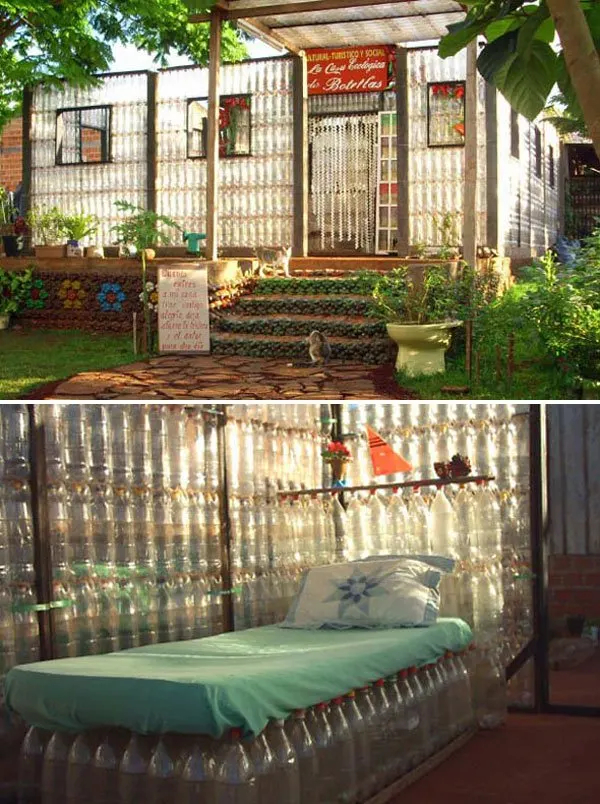
The Alfredo Santa Cruz family built this house using 1,200 PET plastic bottles, aiming to promote environmental and social responsibility. They also constructed a small playhouse in a similar manner for their youngest daughter.
In addition to PET bottles, the roof was made using 1,300 milk and wine Tetra packs, while the doors and windows were crafted from 140 CD cases. Inside the house, plastic bottles were cleverly used to create beds and couches. The family developed a special technique to join the plastic bottles together while maintaining symmetry in their construction.
40. Upside Down House, Poland

In 2007, Daniel Czapiewski, a Polish businessman and philanthropist, completed the construction of this house, which has since become a popular tourist attraction in the community of Szymbark. However, due to some confusion among the tradesmen involved, the house took five times longer to build compared to a typical house.
Visitors to the Upside Down House often experience a feeling of queasiness and dizziness as they explore the interior, which is designed to give the sensation of walking on ceilings. The purpose of this unique house is to symbolize Poland’s transition from communist control to democracy, which was a time of uncertainty. The interior decor is intentionally designed to resemble the 1970s, complete with a television playing socialist propaganda and other elements.
41. Heliodome, France

This solar home designed by Eric Wasser acts like a sundial and follows the sun’s path to gather free solar energy for heating in winter and cooling in summer. It’s called the Heliodome and is made of wood, glass, and concrete. The house is not only beautiful but also environmentally friendly, as it eliminates all CO2 emissions.
Although some people in the neighborhood find its unique design resembling a spacecraft, it fulfills Wasser’s vision of a green home.
42. Tree Hotel, Sweden

Gone are the traditional treehouses; nowadays, they come in sleek and modern designs like the Tree Hotel in Harads, Sweden. This unique treehouse is shaped like a cube and is wrapped around a tall tree trunk. It’s made of lightweight metal and has mirrored glass on the outside, allowing it to blend seamlessly with the surroundings by reflecting the sky and trees.
Inside, the treehouse is made of plywood and offers a panoramic view of the surroundings. It includes a bedroom, a small bathroom, and a living area with a rooftop terrace. To access the treehouse, you have to cross a rope bridge connected to the neighboring tree. The architect behind this project is Tham & Videgrd Arkitekter.
43. Pierre Cardin’s “Bubble House”, France

In the 1970s, architect Antti Lovag designed a unique mansion with a bubble shape. Inspired by the organic and flowing shapes found in prehistoric caves and troglodyte environments, Lovag aimed to incorporate these elements into his design. The Palais Bulles, spanning 8,500 square meters and overlooking the Mediterranean Sea, features an outdoor amphitheater, a reception hall that can accommodate 350 people, a garden with a pool, and ponds.
To complement the rounded design, even the beds in the mansion are circular. Interestingly, despite having designed his famous bubble dress three decades prior, fashion designer Pierre Cardin purchased this 28-bedroom house in 1989. The Palais Bulles has since become a popular venue for film festival parties and fashion photography. It is worth noting that at the remarkable age of 90, Antti Lovag continues to create extraordinary homes.
44. Hotel Costa Verde, Costa Rica

It’s hard to believe, but this hotel used to be an actual Boeing 727 airplane from 1965. It’s one of the most unique and unusual hotels in the world. The airplane was carefully dismantled and transported to its current location piece by piece. It now sits on a 50-foot pedestal near the edge of a national park in Costa Rica. From up there, you can enjoy breathtaking views of the jungle.
45. Mobile Aquatic Pod, England

The “Exbury Egg,” originally designed by Stephen Turner as an art installation, became Stephen’s unique floating home. The egg-shaped structure is transported to its location by boat and serves as an ultra-minimal living space. Its wooden exterior is designed to naturally age and blend in with the surrounding marshes.
Inside, the pod consists of a single room that includes a basic shower, a hammock, and cooking equipment. A detachable dock provides access to the egg. The ergonomic design of the egg is anchored with ropes and gently moves with the tide, making it an ideal mobile floating house.
46. Villa Vals, Switzerland

Villa Vals is located near the famous thermal springs of Vals and was cleverly built into a hillside to harmonize with the surrounding nature and provide uninterrupted views of the beautiful alpine scenery.
To reach the front door, visitors must pass through a barn and an underground tunnel. This property, designed by Christian Müller Architects and SeARCH, offers a stylish interior and can be rented by visitors of Therme Vals.
47. Malator House, UK

The Malator House, also known as the Teletubby house, is a unique underground dwelling that blends seamlessly into a hillside. Built in 1998 by Future Systems architects for Bob Marshall-Andrews QC, a Member of Parliament, it showcases innovative construction techniques that help preserve the natural landscape.
The house remains hidden from above, as it is covered with local grasses, and only a front glass window reveals its location. This design allows the home to harmoniously merge with the surroundings and conserve the beauty of the landscape.
